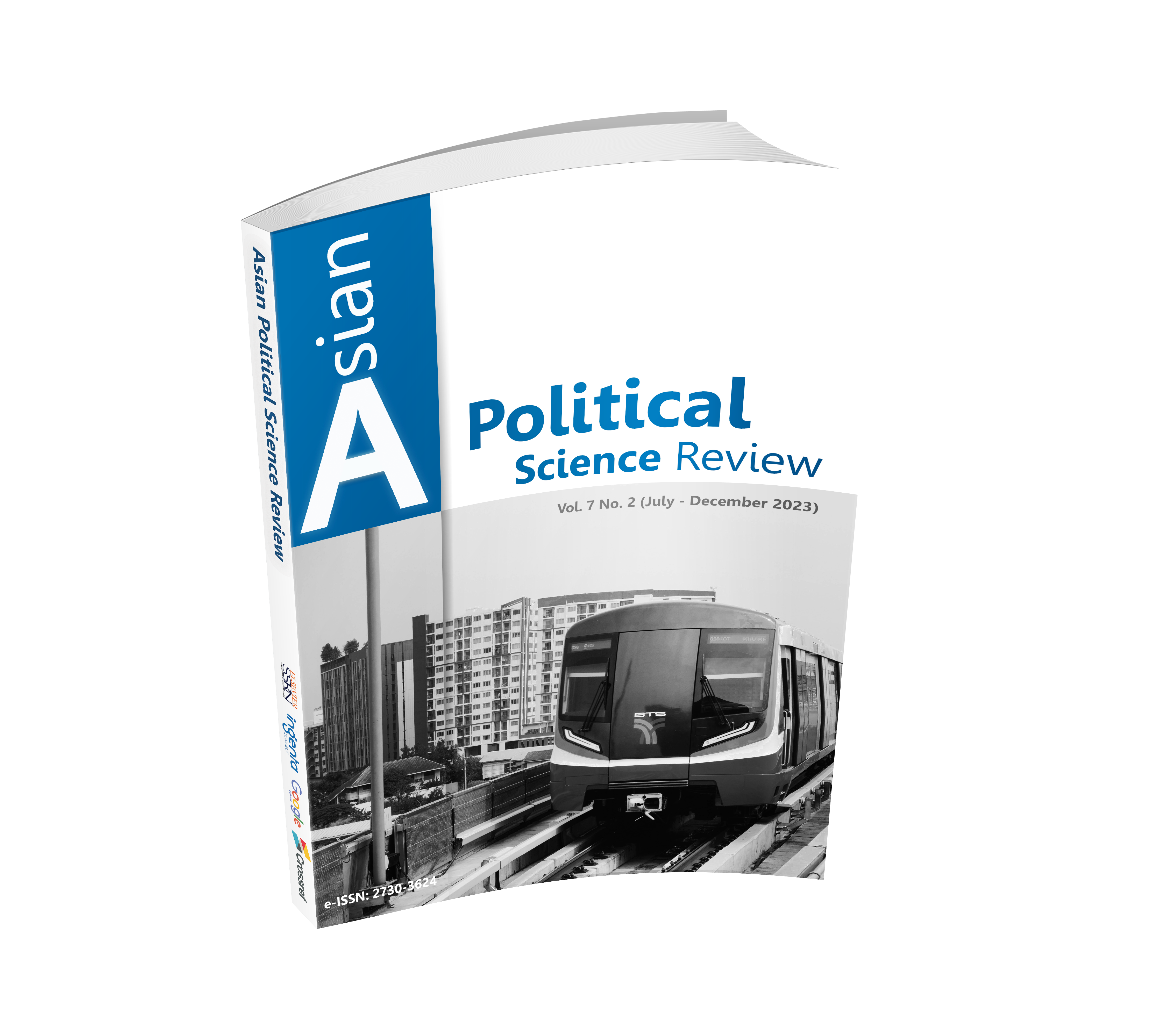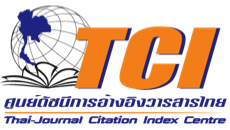MOTIVATION FOR THE PERFORMANCE OF SOLDIERS: EVIDENCE FROM THE 109TH ARTILLERY BATTALION, 9TH ARTILLERY REGIMENT, THAILAND
DOI:
https://doi.org/10.14456/apsr.2023.9Keywords:
Motivation, Performance, SoldierAbstract
The objectives of this research were 1) to analyze the motivation for the performance of soldiers in the 109th Artillery Battalion, 9th Artillery Regiment and 2) to compare the motivation for the performance of soldiers in the 109th Artillery Battalion, 9th Artillery Regiment, classified by the independent variables. The quantitative cross-sectional analytic study collected data from 152 troops using a questionnaire with a reliability score of .92. Statistics included frequency, percentage, mean, standard deviation, One-Way ANOVA for variance analysis, and pairwise testing using Scheffé’s Method. The research findings revealed that the level of motivation for the performance of soldiers in the 109th Artillery Battalion, 9th Artillery Regiment was overall at the high level. The aspect of commanders had the highest mean. When comparing the motivation for the performance, it was found that age, educational level, and salary were different at the statistically significant level of .05. There was no difference in experience, rank, and status. Therefore, in formulating the policies to enhance the motivation for the performance, the management should prioritize the variables of age, educational level, and salary.
Downloads
References
th Artillery Regiment. (2022). Artillery Regiment’s Manpower. Kanchanaburi: 9th Artillery Regiment.
Bandura, A. (1977). Social Learning Theory. New Jersey: Prentice-Hall.
Bass, B. (1985). Leadership and Performance beyond Expectations. Massachusetts: Free Press.
Deci, E., & Ryan, R. (2000). The "what" and "why" of goal pursuits: Human needs and the self-determination of behavior. Psychological Inquiry, 11(4), 227-268.
Eneh, S., & Awara, N. (2016). Strategic human resource management practices and organizational growth: A theoretical perspective. Global Journal of Social Sciences, 15(1), 27-37.
Gagné, M., & Deci, E. (2005). Self-determination theory and work motivation. Journal of Organizational Behavior, 26, 331-362.
Greenhalgh, L., & Rosenblatt, Z. (1984). Job insecurity: Toward conceptual clarity. Academy of Management Review, 9(3), 438-448.
Hackman, J., & Oldham, G. (1976). Motivation through the design of work: Test of a theory. Organizational Behavior and Human Performance, 16(2), 250-279.
Herzberg, F. (1968). One More Time: How Do You Motivate Employees?. Harvard Business Review, 46, 53-62.
Irawati, L., Khaeruman, & Farradia, Y. (2021). Analysis of the Work Motivation Factors on an Employee Performance. International Journal of Educational Research & Social Sciences, 2(4), 730-735.
Jatmiko, B., Udin, U., Raharti, R., Laras, T., & Ardhi, K. (2021). Strategies for MSMEs to Achieve Sustainable Competitive Advantage: The SWOT Analysis Method. Journal of Asian Finance, Economics and Business, 8(3), 505-515.
Kirchner, M., & Akdere, M. (2014). Examining leadership development in the US Army within the human resource development context: Implications for security and defense strategies. The Korean Journal of Defense Analysis, 26(3), 351-369.
Krejcie, R., & Morgan, D. (1970). Determining sample size for research activities. Educational and Psychological Measurement, 30(3), 607-610.
Locke, E. (1968). Toward a theory of task motivation and incentives. Organizational Behavior and Human Performance, 3(2), 157-189.
Maslow, A. (1943). A theory of human motivation. Psychological Review, 50(4), 370-396.
Naz, S. (2015). Relationship of life satisfaction and job satisfaction among Pakistani army soldiers. İşletme Araştırmaları Dergisi, 7(1), 7-25.
Ng, E., Schweitzer, L., & Lyons, S. (2010). New Generation, Great Expectations: A Field Study of the Millennial Generation. Journal of Business and Psychology, 25, 281-292.
Ng, T., Sorensen, K., & Eby, L. (2006). Locus of control at work: A meta-analysis. Journal of Organizational Behavior, 27, 1057-1087.
Quirk, B. (2019). Empathy, Ethics and Efficiency: Twenty First Century Capabilities for Public Managers. In H. Dickinson, C. Needham, C. Mangan, & H. Sullivan. (eds.). Reimagining the Future Public Service Workforce (pp. 93-108). Singapore: Springer.
Swasthaisong, S. (2019). Integrated Causal Factors For and Guidance on the Enhancement of Transparency in Local Administrative Organizations in Northeastern Thailand. PSAKU International Journal of Interdisciplinary Research, 8(Special Issue), 15-25.
Sriram, N., Misomnai, C., Metasuttirat, J., & Rajphaetyakhom, C. (2019). A Comparative Analysis of New Public Management New Public Service and New Public Governance. Asian Political Science Review, 3(2), 32-39.
Sturges, J., & Guest, D. (2004). Working to live or living to work? Work/life balance early in the career. Human Resource Management Journal, 14(4), 5-20.
Tirana, J., Trungu, D., & Chiesi, L. (2023). Motivation Factors Influence Teachers’ Job Satisfaction. Journal of Educational and Social Research, 13(3), 265-265.
Twenge, J., Campbell, S., Hoffman, B., & Lance, C. (2010). Generational Differences in Work Values: Leisure and Extrinsic Values Increasing, Social and Intrinsic Values Decreasing. Journal of Management, 36(5), 1117-1142.
Vroom, V. (1964). Work and Motivation. New York: Wiley.
Vukonjanski, I., Vasilijević, D., & Mitić, N. (2018). Professional Training of State Officers and the Importance of Knowledge Management in the Public Sector. Facta Universitatis, 2(1), 95-103.
Vyas, L. (2004). Delivering Better Government: Assessing the Effectiveness of Public Service Training in India. Public Personnel Management, 33(3), 291-306.

Downloads
Published
How to Cite
Issue
Section
License
Copyright (c) 2023 Authors

This work is licensed under a Creative Commons Attribution-NonCommercial-NoDerivatives 4.0 International License.











.png)


